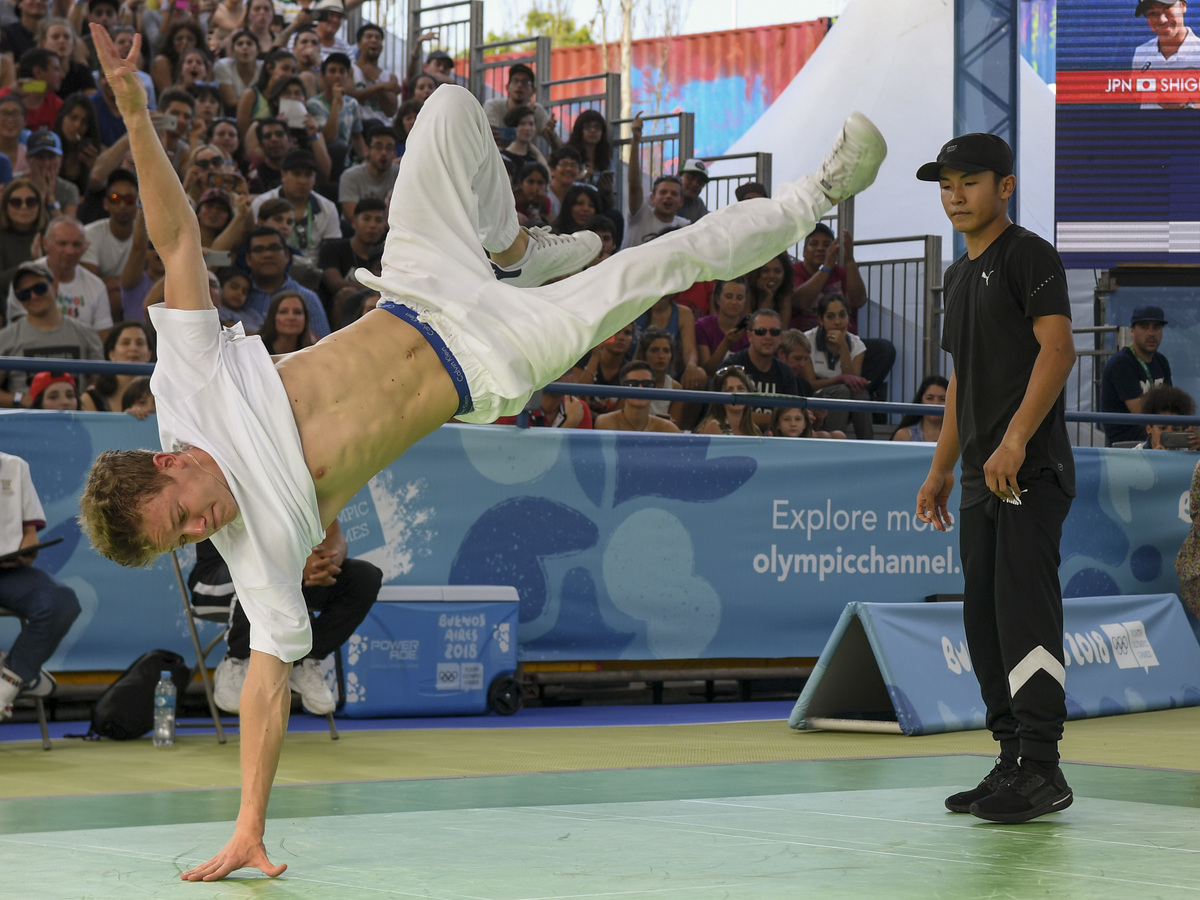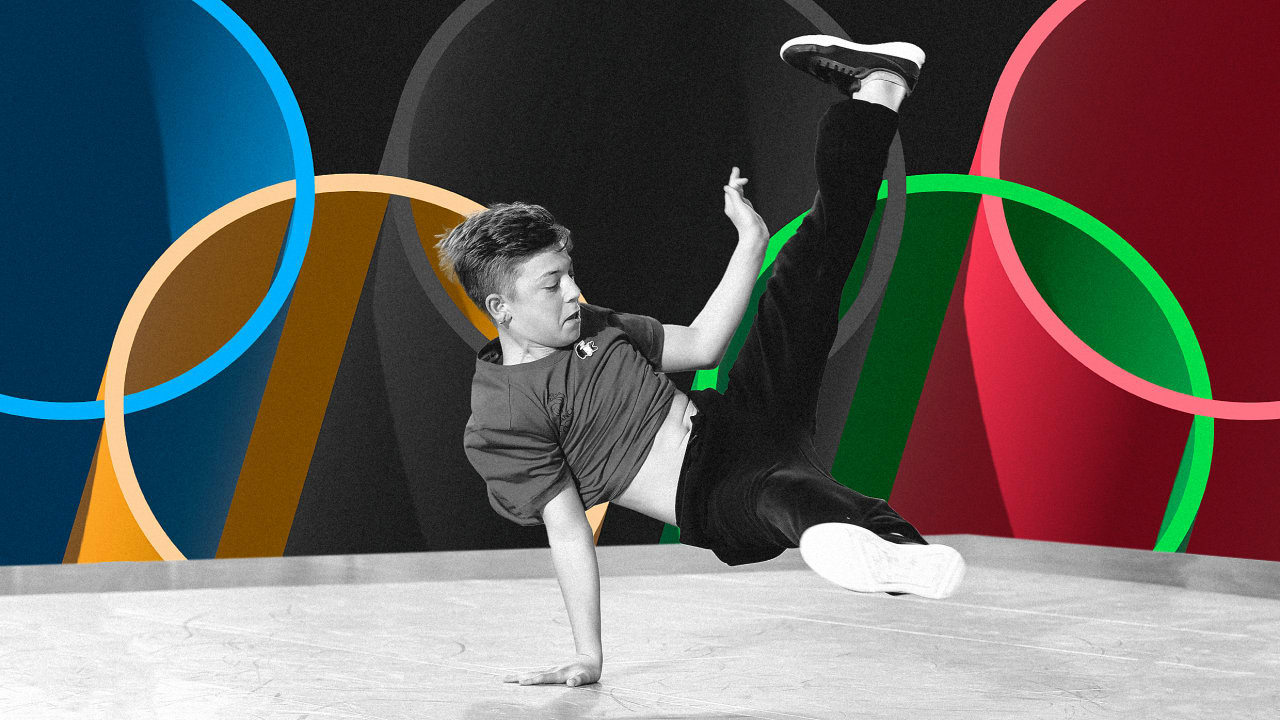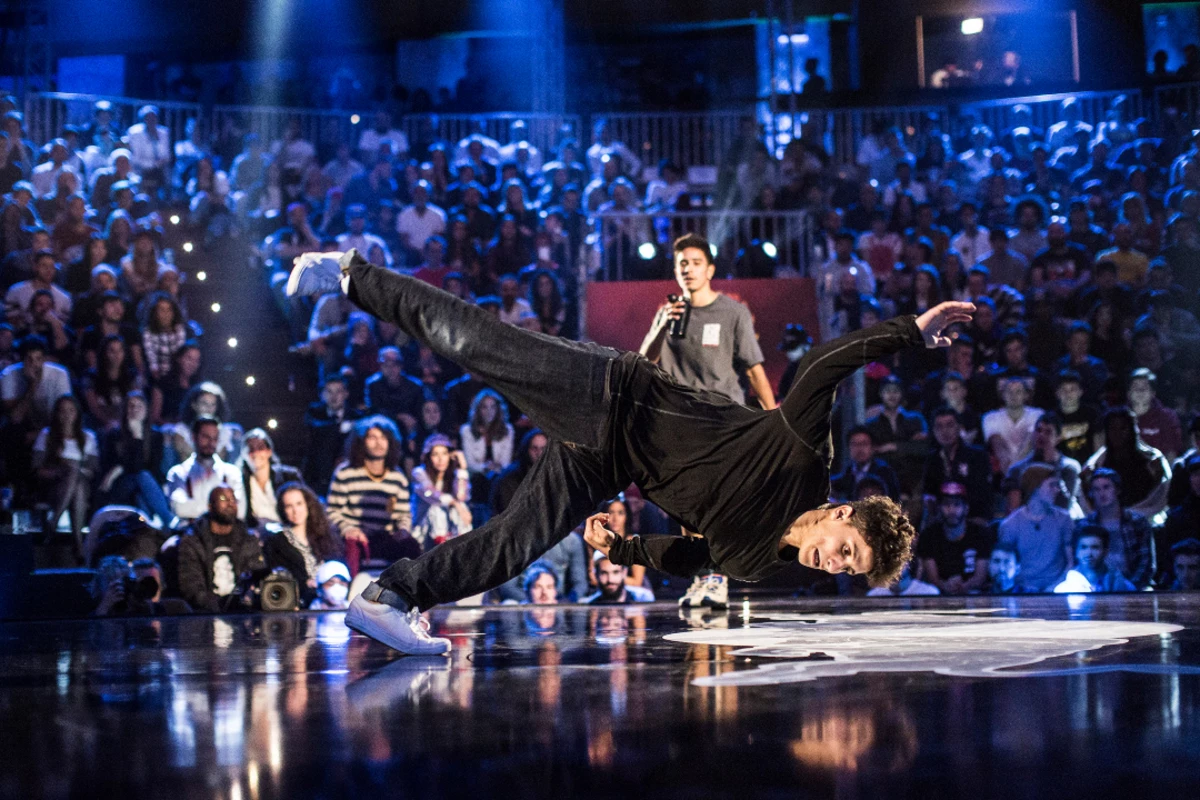History of Breakdancing in the Olympics: Breakdancing Olympics

Breakdancing, a vibrant and dynamic form of street dance, has evolved from its humble beginnings in the streets of New York City to its current status as a potential Olympic sport. This journey is marked by key milestones and influential figures who have shaped the dance form and brought it to the world stage.
Evolution of Breakdancing
Breakdancing emerged in the 1970s in the Bronx, New York, during a period of social and cultural change. It was influenced by a variety of dance styles, including funk, jazz, and martial arts. The early years of breakdancing were characterized by its association with hip-hop culture and its use as a form of self-expression and community building. Breakdancing gained popularity in the 1980s with the release of films like “Beat Street” and “Flashdance,” which showcased the dance form and its energetic moves.
Key Milestones and Influential Figures
Breakdancing’s journey has been marked by several key milestones and influential figures.
- The Rock Steady Crew: Founded in 1977, the Rock Steady Crew is considered one of the pioneers of breakdancing. They helped popularize the dance form through performances and competitions, contributing to its growth and recognition.
- The Furious Five: Another influential crew, the Furious Five, played a crucial role in promoting breakdancing through their music and performances. Their energetic style and innovative moves helped shape the dance form.
- The 1980s: This decade witnessed a surge in breakdancing’s popularity, driven by media attention and the emergence of prominent dancers and crews. Breakdancing competitions, including the “Battle of the Year,” gained widespread recognition.
- The 1990s: Breakdancing continued to evolve, incorporating new moves and styles, as dancers experimented with different techniques. The rise of the internet facilitated the spread of breakdancing videos and tutorials, making the dance form more accessible to a wider audience.
- The 2000s: Breakdancing witnessed a resurgence in popularity, driven by the emergence of new dance crews and the increasing use of breakdancing in music videos and commercials. The dance form became more mainstream and was integrated into various forms of entertainment.
- The 2010s: Breakdancing’s popularity continued to grow, with the dance form becoming increasingly recognized as a legitimate art form. It was included in various international dance competitions and events, further solidifying its status as a global phenomenon.
Breakdancing and Other Olympic Sports
Breakdancing shares similarities with other Olympic sports in its emphasis on athleticism, artistry, and competitive spirit.
- Gymnastics: Both breakdancing and gymnastics require strength, flexibility, and coordination. The dynamic moves and acrobatic elements in breakdancing are reminiscent of gymnastics routines.
- Martial Arts: Breakdancing incorporates elements of martial arts, such as footwork, balance, and power. The use of spinning and power moves in breakdancing is similar to techniques used in martial arts.
- Dance Sports: Breakdancing, like other dance sports, involves the expression of artistry and creativity through movement. The focus on technique, rhythm, and expression is common to both.
Breakdancing as an Olympic Sport

Breakdancing, a dynamic and expressive dance form, has captured global attention and sparked debate regarding its inclusion in the Olympic Games. While its energetic routines and cultural significance are undeniable, the potential benefits and challenges of integrating breakdancing into the Olympics warrant careful consideration.
Arguments for and Against Including Breakdancing in the Olympics
The inclusion of breakdancing in the Olympics presents a compelling case, with both proponents and detractors advancing their arguments.
Arguments for Inclusion
- Breakdancing’s global appeal and widespread popularity, particularly among younger generations, make it a suitable candidate for inclusion in the Olympics. The dance form has garnered a significant following worldwide, with numerous competitions and events held annually.
- Breakdancing embodies athleticism, artistry, and cultural significance, aligning with the Olympic spirit of promoting sportsmanship, excellence, and diversity. The intricate footwork, powerful spins, and creative improvisation showcased in breakdancing demonstrate the physical and mental prowess required of its practitioners.
- Breakdancing’s inclusion in the Olympics would provide a platform for talented breakdancers to showcase their skills on a global stage, fostering international recognition and encouraging the development of the sport.
Arguments Against Inclusion
- Critics argue that breakdancing lacks the traditional elements of an Olympic sport, such as standardized rules, objective scoring criteria, and a clear path to progression. The subjective nature of judging breakdancing performances can lead to inconsistent results and potential bias.
- Some argue that the inclusion of breakdancing in the Olympics could dilute the prestige and legacy of traditional Olympic sports, diminishing their significance and impact. They contend that the Olympics should remain focused on established sports with a long history and a clear set of rules.
- Concerns have been raised regarding the potential for commercialization and exploitation of breakdancing within the Olympic framework. Critics fear that the focus on competition and medals could overshadow the artistic and cultural aspects of the dance form.
Potential Benefits and Challenges of Integrating Breakdancing into the Olympic Games
The integration of breakdancing into the Olympics presents both opportunities and challenges.
Potential Benefits
- Increased global visibility and recognition for breakdancing, potentially leading to greater participation and investment in the sport. The Olympic platform would provide a significant boost to breakdancing’s profile, attracting a wider audience and sponsorships.
- The opportunity for breakdancers to receive professional training, coaching, and support, enhancing their skills and development. The inclusion of breakdancing in the Olympics could encourage the establishment of specialized training programs and facilities, fostering a more structured and professional environment for athletes.
- Breakdancing’s inclusion in the Olympics would promote cultural exchange and understanding, showcasing the diverse styles and traditions associated with the dance form. The Olympic stage provides a platform for different cultures to come together and celebrate their unique artistic expressions.
Potential Challenges
- The need to develop standardized rules, judging criteria, and scoring systems that are fair, transparent, and consistent. The subjective nature of breakdancing poses a challenge in creating a standardized framework for judging performances.
- Balancing the artistic and competitive aspects of breakdancing within the Olympic framework. The Olympics emphasize competition and medals, which could potentially overshadow the artistic and cultural expressions that are integral to breakdancing.
- Ensuring inclusivity and diversity within breakdancing competitions, representing the various styles and backgrounds within the dance form. The Olympic selection process and competition format should reflect the diversity and richness of breakdancing styles and traditions.
Potential Breakdancing Competition Format for the Olympics
Designing a breakdancing competition format for the Olympics requires careful consideration of judging criteria, scoring systems, and event structure.
Judging Criteria
- Technical skills: Judges would assess the dancer’s mastery of foundational breakdancing techniques, including footwork, spins, power moves, and freezes.
- Creativity and originality: Judges would evaluate the dancer’s ability to showcase unique moves, innovative combinations, and personal style.
- Musicality and rhythm: Judges would assess the dancer’s ability to interpret the music and move in sync with the beat.
- Stage presence and performance quality: Judges would evaluate the dancer’s charisma, energy, and overall stage presence.
Scoring System
- A point-based system could be used, with judges awarding points for each criterion. The scores from multiple judges could be averaged to determine the overall score for each dancer.
- The competition format could include preliminary rounds, semi-finals, and a final round, with the top performers advancing to each stage.
- A combination of subjective and objective criteria could be used to ensure fairness and consistency in judging. For example, objective criteria, such as the number of successful power moves or the complexity of footwork patterns, could be incorporated alongside subjective criteria, such as creativity and stage presence.
Event Structure
- The competition could be structured as individual or team events, allowing for different formats and styles of performance.
- The event could include both solo and battle rounds, showcasing different aspects of breakdancing. Solo rounds would allow dancers to showcase their individual skills, while battle rounds would allow for direct competition and improvisation.
- The competition could be designed to incorporate elements of traditional breakdancing culture, such as cyphers (circular formations where dancers take turns performing) and music selection by DJs.
Impact of Breakdancing on the Olympics

The inclusion of breakdancing in the Olympics marks a significant moment in the history of both the Games and the art form itself. This decision carries with it the potential to transform both the cultural landscape and the future of the Olympics.
Cultural and Societal Impact, Breakdancing olympics
Breakdancing’s inclusion in the Olympics will undoubtedly have a profound impact on society, particularly in terms of cultural recognition and representation. It will introduce a new generation to the history and artistry of this dance form, fostering greater understanding and appreciation for its roots in street culture. This will likely lead to increased participation in breakdancing, particularly among youth, as they are inspired by the presence of this vibrant art form on the world’s biggest sporting stage.
Breakdancing olympics – Breakdancing at the Olympics is pretty epic, but you know what else is epic? A frosty from Wendy’s, wendy frosty. It’s like a sweet reward after a tough breakdancing practice session, ya know? Maybe the Olympics should have a frosty break during the competition.
That would be pretty lit.
Breakdancing at the Olympics was a huge deal, and I was totally hyped to see it. It was a bummer, though, that the pandemic had such a huge impact on the Games, especially with the covid surge hitting right before the opening ceremony.
I hope the next Olympics are a little smoother and we can see even more awesome breakdancing moves.